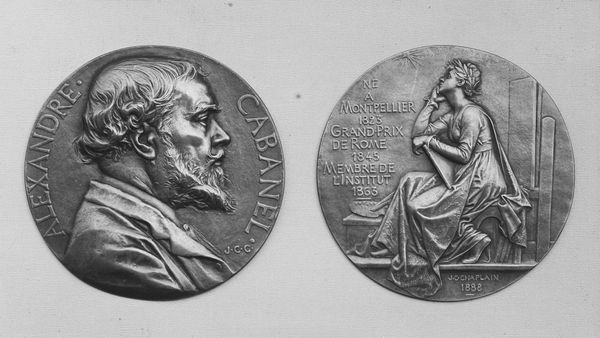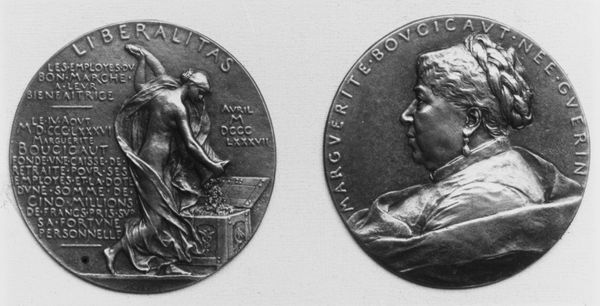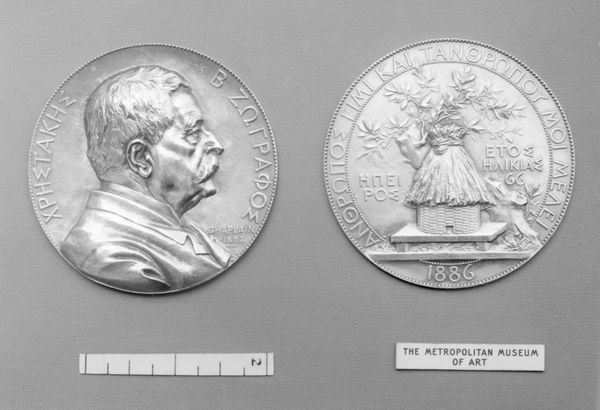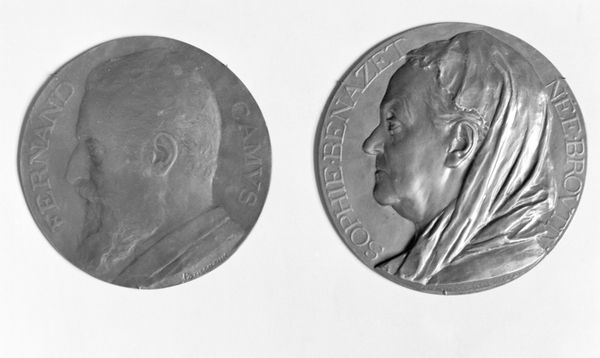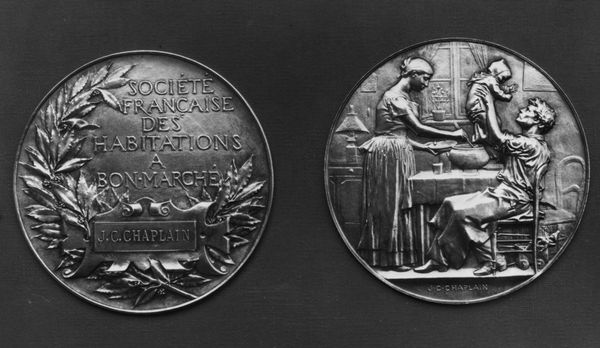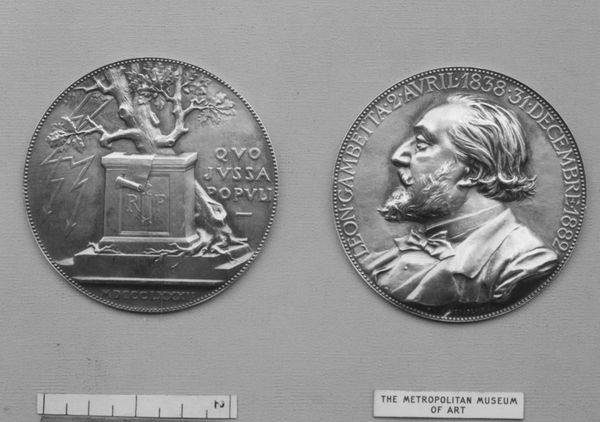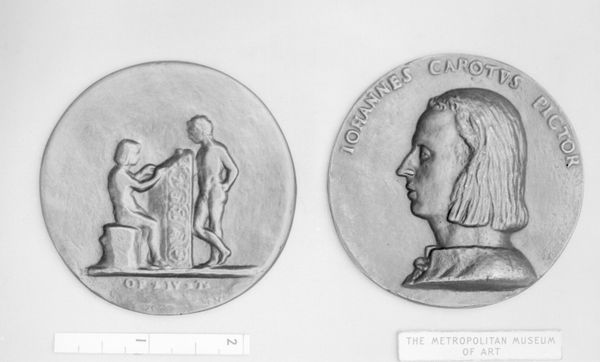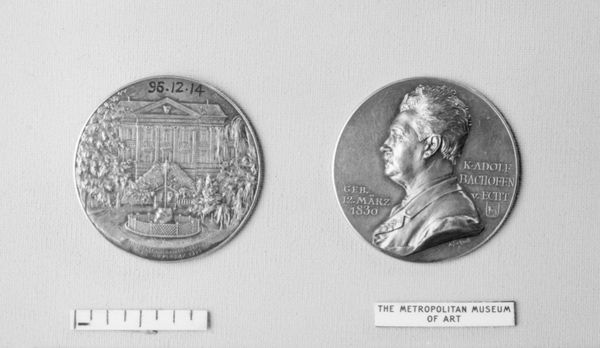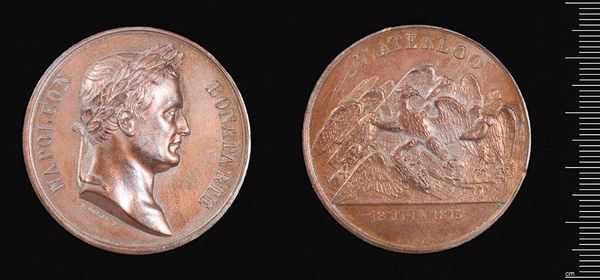
Jean Léon Gérôme (1824–1904), French Painter 1885
0:00
0:00
sculpture
#
portrait
#
medal
#
sculpture
#
classical-realism
#
sculptural image
#
figuration
#
female-nude
#
sculpture
#
black and white
#
decorative-art
#
nude
#
male-nude
Dimensions: Diameter: 3 15/16 in. (10 cm)
Copyright: Public Domain
Editor: This is a medal, created in 1885 by Jules-Clément Chaplain, a French artist. It’s currently held at the Metropolitan Museum of Art in New York. On one side we see a portrait of Jean-Léon Gérôme, and on the other, what looks like an allegorical figure of Painting. I’m really struck by the contrasting textures and the level of detail he achieved in such a small format. What’s your take on it? Curator: The medal’s structure invites contemplation on binary oppositions. Note the contrasting profile views: Gérôme, rendered with a crisp, almost photographic realism, versus the idealized, allegorical nude. Chaplain's skillful handling of relief and intaglio creates a compelling visual dialogue. Editor: That makes sense. The Gérôme side feels very grounded and specific, while the other seems more symbolic, almost floating outside of time. Does the structure create meaning, then? Curator: Precisely. Consider the distribution of weight and mass: The inscription circumscribing Gérôme's likeness stabilizes and defines the form. In contrast, the female figure with the attributes of painting, positioned before architectural forms and bearing the inscription "Pittura", operates more freely within the composition. Do you observe how the placement of these elements affects your interpretation? Editor: It does feel like the artist is contrasting the concrete reality of Gérôme the person, with the more abstract idea of painting itself. Almost as if Gérôme *embodies* the *idea* of painting! Curator: An insightful observation! The structural elements not only inform, but actively shape, our perception. The visual language employed reinforces conceptual divisions, offering a powerful meditation on art and representation. Editor: So, analyzing the forms themselves—the compositions, the relationships between figures and text—gives us a deeper understanding of the artist's intent and the work's meaning. That’s incredibly helpful. Curator: Precisely! Formal analysis serves as a critical tool, offering pathways toward a deeper engagement with artistic production.
Comments
No comments
Be the first to comment and join the conversation on the ultimate creative platform.
